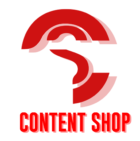
Best practices for content taxonomy and implementation
What do you do when your life is in super chaos? Call friends, desperately seek people to get clarity or search for a mentor or guide. Chaos appears in several forms also for an organization without a content strategy. Some business management thinks they can navigate chaos on their own: after all, it is their company, they know the ‘ins’ and ‘outs.’ But there is a methodology to move towards disruption in a better manner. If you understand that chaos=unstructured data= a Godzilla attack, screams for H-E-L-P.
If we get realistic and remove the ‘Godzilla bit’, there are better solutions available for creating a well-organized content strategy. It is functional and offers successful metrics for the efforts put in. With experience, we help diverse organizations to create classifications, and develop a taxonomy for all documentation.
We are about to reveal the following points related to enhancing findability with better tools and techniques:
From Chaos to Clarity- An Overview
· The benefits of a well-organized content strategy
· Common content organization challenges
· The importance of classification
· Content organization tools and techniques
· Creating a content inventory
· Developing a content taxonomy
· Using metadata to enhance findability
· Implementing a content management system
· Measuring the success of your content organization efforts
The benefits of a well-organized content strategy
- Track progress
- Identify new opportunities
- Optimizes different departmental teams
- Accountability is clear for all
- Produce content that converts
- Helps improve the tonal quality of the message
- Style and formatting keep it structured
- Easy to use distribution channels to leverage
Reach organizational goals in a timely manner instead of wasting time, energy and money. It is important to make priorities at a management level. Finding appropriate content makes the difference for an amicable customer journey, employee productivity and reaching business goals. Keeping the findability factor on the top ensures the content is valued and creates the right impression. As it becomes easy to locate the required information, both, engagement and conversions are high.

Common content organization challenges
Obstacles produce challenges and they can be overcome with knowledge and implementation. Organisations can develop best practices with various classifications and categories to help people find the right information and related content. One glaring example is to remove duplication and the same topic being available in different categories. It only creates confusion. This occurs due to a lack of strategy and proper planning.
It is also important to keep all content updated for relevance. This holds true on website and social media where the content in different forms exist. It creates a bad impression and keeps the targeted audience away no matter good your brand or service is. All customers, prospects and regular consumers need to access information in a timely manner.
By overcoming challenges ROI jumps as chaos clears.
The importance of content classification for organizations
Information overload or lack of it, both poses problems. However, if the content is classified and categorized it is a booster for productivity. Unstructured data is often deleted or sits there on a large pile. But it does contain useful insights for decision-making. It possesses resources which cannot be ignored. They come in the form of email chats, documents, chatbot messages, and social media content. Instead of stashing away the volume of data, it can be classified for accessibility and future usage.
Depending on the content structure various categories can be made of the documents. Quick identification keeps the content relevant with the right technology.
Content organization tools and techniques
The following ways yield results for getting access to reimagined content.
· Creating a content inventory
· Developing a content taxonomy
· Using metadata to enhance findability
· Implementing a content management system

All the content on the website has to be classified. It will consist of text, images, applications and documents. If the goals are set, the inventory can be made as per the importance of the date and value of information. It should ideally consist of the following for quick findability.
- URL of content
- Title
- File format- doc, text, PDF or HTML
- Author
- Location online or offline -i.e., on the server or CMS
- Meta description
- Meta keywords
- Tags
- Date of creation – (should also include revisions and updates for relevance)
The website pages that no longer are required can be deleted permanently or archived.
All gaps should be addressed for any information or revised.
Content taxonomy is a system based on predefined categories. They include topics, formats, and personas that make sense for your business. All information is easy to find no matter how large the dataset is. For example, a software company might include categories of product features, case studies, and industries.
The technique of classification can be unique to organizational requirements. In a complex eco-system templates, prototypes and existing models should be applied. The terminology should have a controlled vocabulary to tag and drive its accessibility. It will help users to navigate, optimize search and personalize the findability. It can be delivered across different channels for automated applications of content.
Metadata is the effective use of keywords related to your products or services. New keywords can be added to the list. If users are unable to locate what they need, the website has no meaning. It equals to loss of business to rivals. The same is the case for employees who lose out on productivity by searching for something that may not exist. Analytics can be used to make search effective and Metadata is the way to go.
Implementing a content management system (CMS) is a classic way to rescue operations and remove chaos. The description of CMS has evolved over the last few years due to the explosion of devices, digital assets, channels, and smart interfaces. Now it is possible to build and organize the content with more clarity. And there are more methods to structure the content of blogs, emails, press releases, and virtual guides for websites.
There are different CMS that businesses can adopt to improve the findability of content without wasting time and energy. They are designed to access the web, mobile and digital experiences of users. Any enterprise that still has not applied a CMS is bound to remain in chaos and clutter (notwithstanding the Godzilla attack). It has also no room to measure efforts being made to mitigate problems.
Measuring the success of your content organization efforts
User behaviour indicates how well your content strategy Is working. The only powerful way to do this is to use data analytics. If you have different content formats it is a great way to measure performing metrics. It involves sales, traffic, engagement, leads and conversions at different stages.
Conclusion
There is a huge gap between chaos and clarity. It can be bridged with best practices, findability equations, and strategic content categories. Business organizations cannot be claimed to be failures or an ‘Act of God which is hard to understand or a Godzilla attack more difficult to explain. Let’s hope that this feature explains the process to implement.
